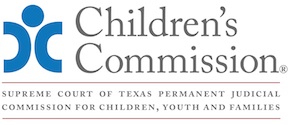A. Trauma
The concept of trauma and the accompanying research have shifted the paradigm about the way in which systems, organizations, professionals, and caregivers approach and serve children, youth, young adults, parents, and families who experience the child welfare system. The field of trauma and trauma-informed care is constantly evolving and expanding. The information in this chapter is intended to give judges a basic understanding of these topics to help them consider approaching child welfare cases in a trauma-informed manner.
40 Tex. Admin. Code § 702.701(a) defines trauma as resulting from "an event, series of events, or set of circumstances that is experienced by an individual as physically or emotionally harmful or life threatening with lasting adverse effects on the individual's functioning or the individual's mental, physical, social, emotional, or spiritual well-being."[176]
Some examples of traumatic experiences include:[177]
• Physical, sexual, or psychological abuse and neglect (including trafficking);
• Witnessing and/or experiencing violence, whether in the family or in the community;
• Loss of loved ones or traumatic grief;
• Natural and technological disasters or terrorism;
• Serious accidents;
• Medical trauma; and/or
• Military family-related stressors (e.g., deployment, parental loss, or injury)
